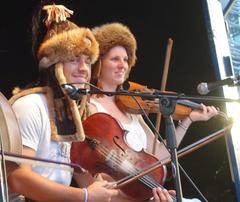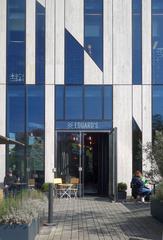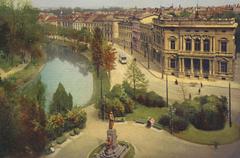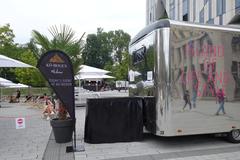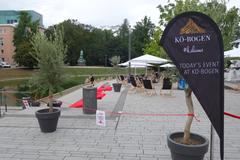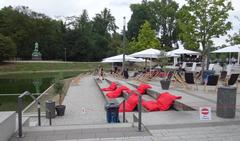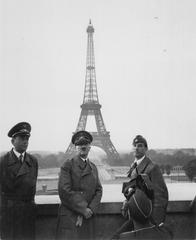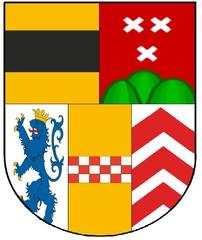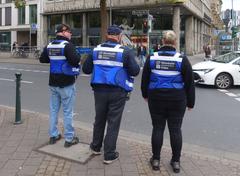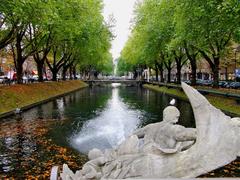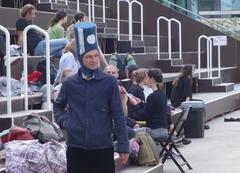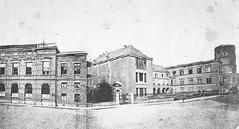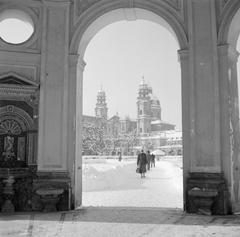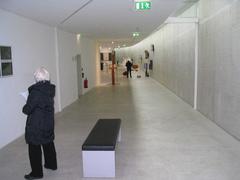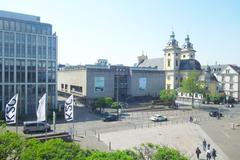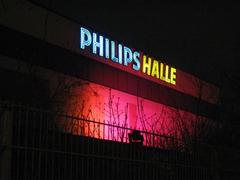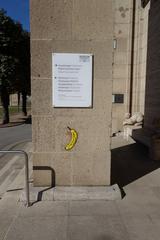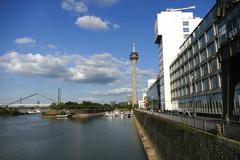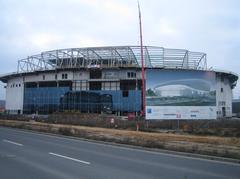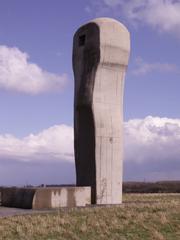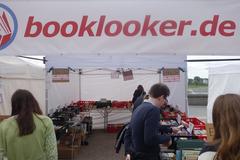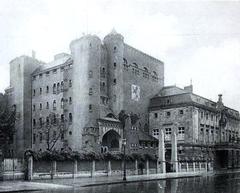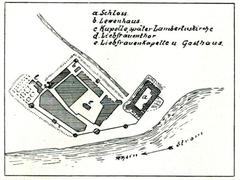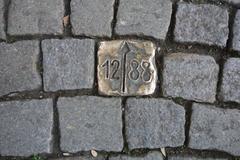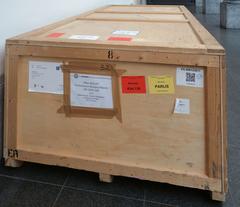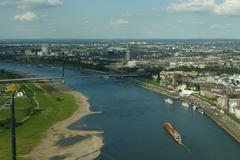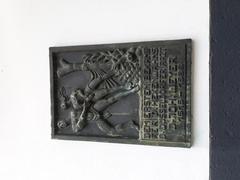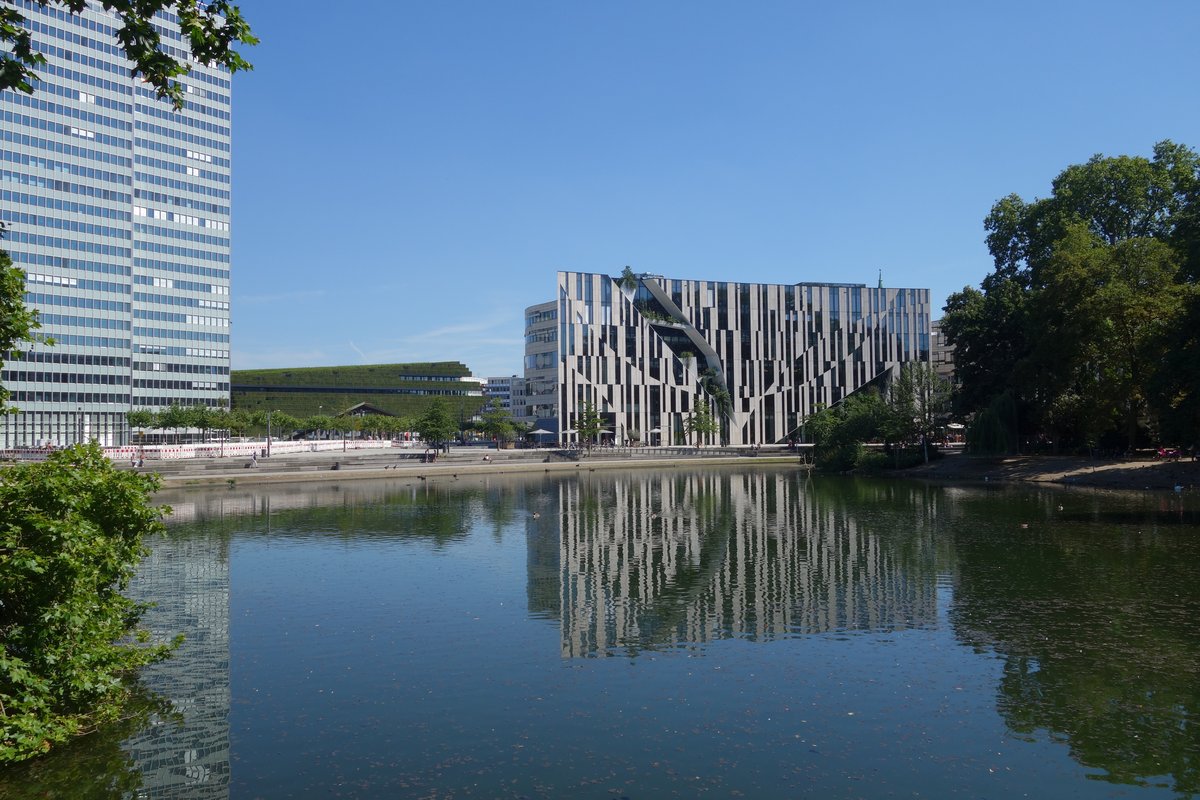
Kö-Bogen Visiting Hours, Tickets, and Historical Sites in Düsseldorf
Publication Date: 18/07/2024
Introduction to Kö-Bogen
Discover the allure of Kö-Bogen in Düsseldorf, Germany, a landmark that seamlessly blends history, modern design, and sustainability. This prestigious shopping and office complex stands as a testament to innovative architecture and urban renewal, transforming a once-neglected area into a vibrant hub. Designed by renowned architect Daniel Libeskind, Kö-Bogen not only redefines the city’s architectural landscape but also embodies a unique cultural significance. Whether you’re planning a visit or exploring the architectural marvels of Düsseldorf, Kö-Bogen offers a unique experience that should not be missed (source).
Table of Contents
- Introduction
- A Legacy of Transformation
- Architectural Masterpiece
- Connecting City and Nature
- Sustainability at its Core
- Cultural Hub
- Visitor Information
- Nearby Attractions
- Travel Tips
- Special Events and Guided Tours
- Photographic Spots
- FAQ
- Conclusion
Visiting Kö-Bogen - History, Design, and Visitor Information in Düsseldorf
Kö-Bogen, a prestigious shopping and office complex in Düsseldorf, Germany, stands as a testament to innovative architecture and urban renewal. Its history and design are deeply intertwined, reflecting a city’s ambition to transform a once-neglected area into a vibrant hub.
A Legacy of Transformation
The story of Kö-Bogen begins with a vision to redefine the city center. The area, previously occupied by a busy road junction and an outdated department store, was earmarked for a major overhaul. This ambitious project aimed to create a new gateway to Düsseldorf’s renowned shopping boulevard, Königsallee (Kö), hence the name Kö-Bogen.
Architectural Masterpiece
The task of realizing this vision fell upon renowned architect Daniel Libeskind, known for his deconstructivist style. Libeskind’s design for Kö-Bogen is a striking departure from the traditional architecture of Düsseldorf. Completed in two phases, the complex comprises two buildings:
Kö-Bogen I (2013)
This building, with its flowing, curved facade, resembles a green canyon. The facade’s unique design, featuring white natural stone and green glass elements, creates a dynamic interplay of light and shadow. This interplay is further emphasized by the building’s curved lines, which seem to shift and change depending on the viewer’s perspective.
Kö-Bogen II (2020)
The second phase saw the creation of a building that mirrors the first, forming a visual gateway to Königsallee. This structure, characterized by its undulating green facade planted with hornbeam hedges, seamlessly blends nature and urbanity. The green facade not only enhances the building’s aesthetic appeal but also provides environmental benefits, such as insulation and noise reduction.
Connecting City and Nature
One of the most remarkable aspects of Kö-Bogen is its integration with the surrounding environment. The complex is built atop a tunnel, effectively burying the previously congested road and creating a pedestrian-friendly zone. This new public space, Hofgarten Park, seamlessly connects Kö-Bogen to the adjacent Hofgarten park, establishing a green corridor through the city center.
Sustainability at its Core
Kö-Bogen is not just a visual delight; it’s also a model of sustainable urban development. The complex incorporates numerous environmentally friendly features, including:
- Green facades: The living walls of Kö-Bogen II act as natural insulators, reducing energy consumption for heating and cooling.
- Geothermal energy: The complex utilizes geothermal energy for heating and cooling, minimizing its reliance on fossil fuels.
- Rainwater harvesting: Rainwater is collected and used for irrigation and other purposes, conserving water resources.
Visitor Information
Visiting Hours: Kö-Bogen is accessible 24/7, but individual shops and offices have varying hours. Most retail stores are open Monday to Saturday from 10 AM to 8 PM.
Ticket Prices: Entrance to Kö-Bogen is free, but some events or guided tours may require a fee.
Accessibility: Kö-Bogen is wheelchair accessible and equipped with elevators for ease of movement.
Nearby Attractions: Don’t miss the Königsallee for high-end shopping, the Hofgarten park for a leisurely stroll, and the Düsseldorfer Schauspielhaus for a cultural experience.
Travel Tips
- Best Time to Visit: The best times to visit Kö-Bogen are during spring and autumn when the weather is pleasant and the green facades are in full bloom.
- Guided Tours: Guided tours are available and highly recommended to fully appreciate the architectural nuances and history of Kö-Bogen.
- Photography Spots: The curved facades and green elements make for stunning photographs, particularly during sunrise and sunset when the light is most flattering.
FAQ
What are the opening hours of Kö-Bogen?
Kö-Bogen is open 24/7, though individual shop hours vary.
How much do tickets to Kö-Bogen cost?
Entrance is free, but some special events may have a fee.
What are the best times to visit Kö-Bogen?
Spring and autumn are ideal times to visit.
Conclusion
Since its completion, Kö-Bogen has become a landmark destination in Düsseldorf. Its unique architecture, vibrant mix of shops and restaurants, and seamless integration with the urban fabric have made it a popular destination for locals and tourists alike. The complex has also garnered international acclaim, winning several prestigious architectural awards.
Kö-Bogen stands as a testament to Düsseldorf’s commitment to innovation and sustainability. It’s a place where architectural brilliance meets urban renewal, creating a vibrant and engaging space for all.
Call to Action
Plan your visit to Kö-Bogen today! Download the Audiala app for more travel tips, check out our other posts on Düsseldorf’s historical sites, and follow us on social media for the latest updates.
Summary and Key Points
Since its completion, Kö-Bogen has become a landmark destination in Düsseldorf, attracting architecture enthusiasts and tourists alike. Its unique design, vibrant mix of shops and restaurants, and seamless integration with the urban fabric have garnered international acclaim. Kö-Bogen stands as a symbol of Düsseldorf’s commitment to innovation and sustainability, representing a forward-thinking approach to urban planning where architecture, culture, and sustainability intertwine to create a vibrant and engaging public space. Plan your visit to Kö-Bogen today and experience the rich history and culture of Düsseldorf (source).



